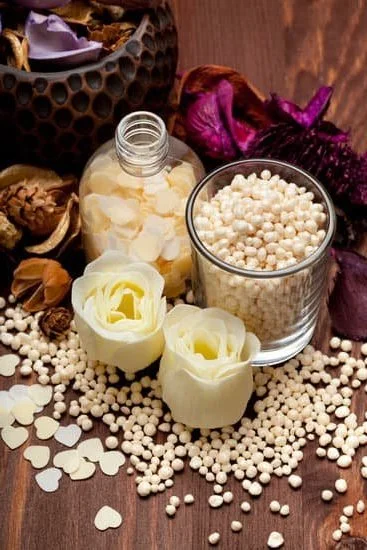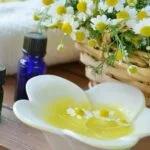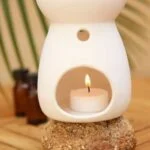Gurunanda Aromatherapy has become increasingly popular as people seek natural and holistic approaches to enhance their well-being. If you’re wondering how to use Gurunanda aromatherapy, you’ve come to the right place. In this article, we’ll explore the benefits of aromatherapy for the mind and body, the basics of aromatherapy oils, choosing the right oils for your needs, different methods of using Gurunanda aromatherapy, incorporating it into your daily routine, and tips for maximizing its effectiveness.
Aromatherapy has been used for centuries as a way to promote relaxation, improve mood, and support overall wellness. By harnessing the power of essential oils derived from plants, Gurunanda offers a wide range of products that can be used in various ways to experience their therapeutic benefits. Whether you’re new to aromatherapy or looking to expand your knowledge on the subject, understanding the basics and learning how to use it effectively can greatly enhance your experience.
One of the key factors in reaping the benefits of aromatherapy is choosing the right essential oils. With so many options available, it’s important to select oils that align with your specific needs and preferences.
From there, learning about different methods of using Gurunanda aromatherapy such as diffusion, topical application, and inhalation can help you customize your experience to suit your lifestyle and desired outcomes. Stay tuned as we dive deeper into each aspect of Gurunanda Aromatherapy in this comprehensive guide.
The Benefits of Aromatherapy for Mind and Body
Aromatherapy has been used for centuries as a natural way to promote physical and mental well-being. The use of essential oils in aromatherapy can have a variety of benefits for both the mind and body. From stress relief to improved sleep, the power of aromatherapy is truly remarkable.
Some of the key benefits of aromatherapy for the mind include reducing stress and anxiety, improving mood, and enhancing relaxation. For the body, aromatherapy can help to alleviate various symptoms such as headaches, muscle pain, and inflammation. By incorporating Gurunanda Aromatherapy into your daily routine, you can experience these incredible benefits firsthand.
When it comes to using gurunanda aromatherapy, there are several methods that can be employed to enjoy its benefits. Whether you choose to use a diffuser, apply oils topically, or add them to your bath, there are countless ways to incorporate aromatherapy into your life. Below are some different methods for using Gurunanda Aromatherapy:
- Diffusion: Using a diffuser is one of the most popular and effective ways to enjoy Gurunanda Aromatherapy. Simply add a few drops of your preferred essential oil to the water in the diffuser and let it disperse throughout the room.
- Topical application: Another common method is applying diluted essential oils directly onto the skin. This can be done through massage or simply by rubbing the oil onto pulse points such as wrists or temples.
- Bathing: Adding a few drops of essential oil into your bathwater can create a relaxing and aromatic experience.
By understanding these different methods of using Gurunanda Aromatherapy, you can start reaping all the amazing benefits that essential oils have to offer.
Understanding the Basics of Aromatherapy Oils
When it comes to understanding the basics of aromatherapy oils, it’s important to first grasp the concept of what aromatherapy is. Aromatherapy is a holistic healing treatment that uses natural plant extracts to promote health and well-being. The use of these plant extracts, also known as essential oils, dates back thousands of years and has been used in various cultures for medicinal and health purposes.
Essential oils are highly concentrated liquids that contain volatile aroma compounds from plants. These oils are extracted through processes like distillation or expression, and each essential oil has its own unique composition and properties. Some popular essential oils used in aromatherapy include lavender, tea tree, peppermint, and eucalyptus.
Many people wonder how to use Gurunanda aromatherapy effectively, especially when it comes to using essential oils. There are a few different methods for using these oils, such as inhalation, topical application, and ingestion (although ingestion should only be done under the guidance of a qualified healthcare professional). Each method has its own benefits and considerations depending on the individual’s needs and preferences.
| Aromatherapy Oil | Main Benefit |
|---|---|
| Lavender | Promotes relaxation and sleep |
| Tea Tree | Antibacterial and antifungal properties |
| Peppermint | Relieves headaches and boosts energy |
| Eucalyptus | Helps with respiratory issues such as congestion |
By understanding the basics of aromatherapy oils and their various uses, individuals can effectively incorporate Gurunanda aromatherapy into their daily routines. It’s essential to choose the right essential oils for specific needs and ensure that they are used safely and appropriately. Whether it’s through diffusion, topical application or inhalation, harnessing the power of aromatherapy can have a positive impact on both physical and mental well-being.
Choosing the Right Aromatherapy Oils for Your Needs
When it comes to using Gurunanda aromatherapy, choosing the right essential oils for your needs is essential. With a wide range of options available, it’s important to understand which oils are best suited to address specific issues or promote certain benefits. Whether you’re looking to reduce stress and anxiety, improve sleep quality, or uplift your mood, there’s an essential oil that can help.
To start, consider what you hope to achieve with aromatherapy. For example, if you’re seeking relaxation and stress relief, lavender essential oil is a popular choice known for its calming properties. On the other hand, if you’re looking for an energy boost and mental clarity, citrus oils like lemon or grapefruit may be more suitable. By identifying your specific needs, you can better narrow down the options and select the best aromatherapy oils for you.
Additionally, it’s important to consider any potential allergies or sensitivities when choosing aromatherapy oils. Some individuals may have adverse reactions to certain essential oils, so it’s crucial to do a patch test before using a new oil on your skin or inhaling it through aromatherapy methods. Pay attention to any discomfort or reactions that may occur and consult with a healthcare professional if necessary.
When deciding on the right aromatherapy oils for your needs, it can also be helpful to research and explore different scents and their corresponding benefits. Experimenting with various essential oils can provide valuable insight into how each one affects your mood and overall well-being. This process of exploration and discovery is an integral part of how to use Gurunanda aromatherapy effectively in order to maximize its benefits for both the mind and body.
Different Methods of Using Gurunanda Aromatherapy
Topical Application
One of the most common and effective methods of using Gurunanda aromatherapy is through topical application. This involves diluting the essential oils with a carrier oil such as coconut, almond, or jojoba oil, and applying it directly to the skin. The best areas to apply the oils are on pulse points like the wrists, temples, and neck. This method allows for easy absorption of the oils into the bloodstream, providing quick relief from various ailments.
Aromatherapy Massage
Another popular way to use Gurunanda aromatherapy is through aromatherapy massage. By adding a few drops of essential oils to a carrier oil, you can create your own massage blend for a soothing and therapeutic experience. Aromatherapy massages not only help in relaxation but also aid in alleviating muscle tension, reducing stress, and promoting overall well-being.
Inhalation
Inhalation is another effective method for using Gurunanda aromatherapy. You can inhale the aromas directly from the bottle or by adding a few drops of essential oil to a bowl of hot water and inhaling the steam. Additionally, you can use a reed diffuser or personal inhaler for a more continuous and controlled inhalation experience throughout the day.
By understanding these different methods of using Gurunanda aromatherapy, you can choose the approach that best fits your needs and preferences to fully harness its therapeutic benefits. Whether it’s through topical application, aromatherapy massage, or inhalation, incorporating these methods into your daily routine can lead to improved physical and mental well-being.
How to Use Gurunanda Aromatherapy in a Diffuser
Gurunanda Aromatherapy offers a wide range of essential oils that can be used with a diffuser to enjoy their therapeutic benefits. A diffuser is a device that disperses essential oil molecules into the air, allowing you to breathe in the aroma and experience the oil’s effects. Using Gurunanda aromatherapy in a diffuser is a simple yet effective way to promote relaxation, improve mood, and create a pleasant environment in your home or workplace.
To use Gurunanda aromatherapy in a diffuser, start by choosing the essential oil blend or single oil that best suits your needs. Whether you’re looking to boost mental clarity, reduce stress, or purify the air, there’s an essential oil for every purpose.
Once you’ve selected your oil, add water to the fill line of your diffuser and then add 5-10 drops of Gurunanda essential oil. Turn on the diffuser and let the aromatic mist fill the air, creating a soothing and fragrant atmosphere.
One popular method of using Gurunanda Aromatherapy in a diffuser is through aromatherapy blends that combine different essential oils to create unique fragrances and therapeutic benefits. For example, Gurunanda offers blends like “Calm,” which includes lavender, chamomile, and sandalwood oils known for their relaxing properties.
Another popular blend is “Breathe Easy,” which contains eucalyptus, peppermint, and tea tree oils to support respiratory health. Using these blends in a diffuser can help you achieve specific wellness goals while enjoying delightful scents throughout your space.
| Gurunanda Essential Oil Blends | Benefits |
|---|---|
| “Calm” | Relaxation and stress reduction |
| “Breathe Easy” | Respiratory support |
Incorporating Aromatherapy Into Your Daily Routine
Creating Aromatherapy Rituals
One way to incorporate aromatherapy into your daily routine is to create rituals around it. For example, you can start your morning by using a citrus-scented essential oil in a diffuser to uplift your mood and energize yourself for the day ahead. In the evening, you might opt for lavender or chamomile essential oils to wind down and prepare for a restful night’s sleep.
Aromatherapy in Self-Care Practices
Aromatherapy can also be integrated into various self-care practices such as meditation, yoga, or bath time. Adding a few drops of your favorite essential oil to a warm bath can enhance relaxation and provide a spa-like experience at home. Similarly, incorporating aromatherapy into meditation or yoga sessions can amplify the calming effects of these practices.
Using Aromatherapy on the Go
For those with busy schedules, using Gurunanda Aromatherapy on the go is simple and convenient. Portable diffusers, essential oil inhalers, or even applying diluted essential oils topically can provide the benefits of aromatherapy wherever you are – whether traveling, at work, or during daily errands.
By seamlessly integrating aromatherapy into your daily routine through these various methods, you can experience the numerous benefits that essential oils have to offer and enhance overall well-being. Explore different scents and application techniques to find what works best for you and enjoy the power of Gurunanda Aromatherapy throughout your day.
Tips for Maximizing the Effectiveness of Gurunanda Aromatherapy
When using Gurunanda Aromatherapy, there are several tips that can help you maximize its effectiveness and fully experience the benefits of essential oils. One important tip is to ensure that you are using high-quality, pure essential oils from Gurunanda. By selecting oils that are free from synthetic ingredients or contaminants, you can ensure that you are getting the most from your aromatherapy experience.
Another tip for maximizing the effectiveness of Gurunanda Aromatherapy is to understand the specific properties and benefits of each essential oil. Different oils have different uses and effects on the mind and body, so it’s important to choose oils that align with your needs and desired outcomes.
For example, lavender oil is known for its calming properties and may be beneficial for promoting relaxation and reducing stress, while eucalyptus oil is often used for its invigorating and respiratory-supporting qualities.
In addition to selecting the right essential oils, it’s also important to use them in the appropriate manner. Whether you choose to use a diffuser, apply them topically, or incorporate them into massage oils or bath products, understanding how to use Gurunanda Aromatherapy effectively will enhance your overall experience with aromatherapy.
By following these tips, you can get the most out of your Gurunanda Aromatherapy practice and enjoy the numerous benefits that essential oils have to offer for your well-being.
Conclusion
In conclusion, Gurunanda Aromatherapy offers a wide range of benefits for both the mind and body, allowing individuals to harness the power of essential oils for overall well-being. By understanding the basics of aromatherapy oils and choosing the right ones for your needs, you can experience the therapeutic effects that these natural remedies provide.
Whether you prefer using a diffuser, incorporating aromatherapy into your daily routine, or taking advantage of other methods, Gurunanda Aromatherapy makes it easy to enjoy the benefits of essential oils.
One popular method is using Gurunanda Aromatherapy in a diffuser, which allows for easy diffusion of essential oils throughout your home or office space. This not only helps to create a relaxing ambiance but also provides numerous health benefits such as stress relief and improved air quality. Additionally, incorporating aromatherapy into your daily routine through various applications can help to promote relaxation, boost energy levels, and alleviate symptoms of common ailments.
To maximize the effectiveness of Gurunanda Aromatherapy, it’s important to follow some key tips such as selecting high-quality oils, properly diluting them when necessary, and experimenting with different blends to find what works best for you. By embracing the power of aromatherapy with Gurunanda products and making them a part of your wellness routine, you can truly experience the positive impact that essential oils can have on your overall health and well-being.
Whether you’re looking for stress relief or seeking natural remedies for common issues, making use of Gurunanda Aromatherapy is an excellent way to enhance your quality of life.
Frequently Asked Questions
How Do You Use GuruNanda Essential Oil?
GuruNanda essential oils can be used in a variety of ways, including aromatherapy, topical application, and even ingestion. They can be diffused using a diffuser, added to bath water, or mixed with a carrier oil for massage.
How Do You Use Aromatherapy Essential Oils?
Aromatherapy essential oils can be used by diffusing them in a room to create a relaxing atmosphere or inhaling the scent directly from the bottle for a quick pick-me-up. They can also be diluted and applied topically to the skin for various benefits.
How Do You Use Aromatherapy Devices?
Aromatherapy devices such as diffusers and nebulizers are commonly used to disperse essential oils into the air for inhalation. These devices come in different forms such as ultrasonic diffusers, heat diffusers, and evaporative diffusers, each with its own unique way of dispersing the aroma of the essential oil.

Are you looking for a natural way to improve your health and wellbeing?
If so, aromatherapy may be the answer for you.





